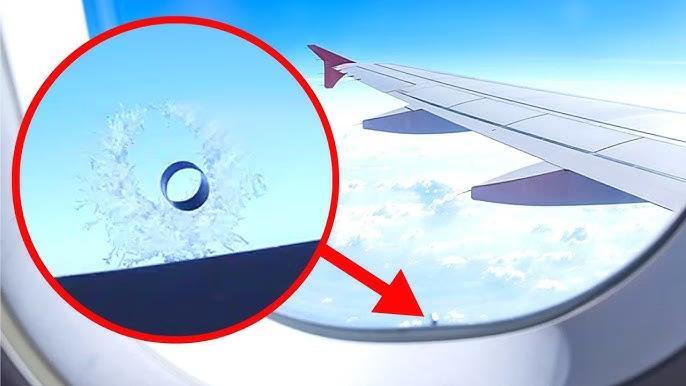
Why is there a tiny hole in every airplane window?
When you board an airplane, you might have noticed a small hole at the bottom of the window. You might have even wondered what its purpose is. Is it a design flaw or a remnant from a past era? The truth is, this tiny hole plays a crucial role in ensuring the safety and comfort of passengers during flight.
The small hole at the bottom of a plane window is called a bleed hole, and it’s a vital feature that equalizes the pressure between the window panes. This might seem like a minor detail, but it’s actually a critical component of the aircraft’s overall design.
Why do airplanes need bleed holes?
At high altitudes, the air pressure decreases significantly. This can cause the air inside the airplane to expand, leading to a buildup of pressure within the cabin. If this pressure isn’t relieved, it can cause the windows to fog up or even shatter. The bleed hole helps to prevent this from happening by allowing the excess air to escape.
The bleed hole is connected to the pressurized cabin and is designed to release any excess air that builds up inside the aircraft. This ensures that the pressure inside the cabin remains equal to the pressure outside, preventing any pressure imbalances that could compromise the structural integrity of the aircraft.
How does the bleed hole work?
The bleed hole is typically located at the bottom of the window, just above the window frame. It’s connected to the pressurized cabin through a small tube that runs along the window frame. When the aircraft reaches cruising altitude, the pressure inside the cabin begins to increase.
As the pressure builds, the air inside the cabin tries to escape through any available opening. The bleed hole provides a controlled release point for this excess air, allowing it to escape slowly and steadily. This helps to maintain a consistent air pressure inside the cabin, preventing any sudden changes that could cause problems.
What happens if the bleed hole is blocked?
If the bleed hole is blocked or obstructed in some way, it can cause serious problems for the aircraft. Without a means to release excess air, the pressure inside the cabin can build up rapidly, leading to a range of issues.
Fogging and condensation can become a major problem, reducing visibility for passengers and pilots alike. In extreme cases, the pressure buildup can even cause the windows to shatter or the aircraft’s structure to become compromised.
The importance of regular maintenance
Given the critical role that bleed holes play in ensuring flight safety, it’s essential that they’re properly maintained and inspected regularly. Airlines and aircraft maintenance personnel take this responsibility seriously, conducting regular checks to ensure that the bleed holes are clear and functioning properly.
Conclusion
The tiny hole at the bottom of an airplane window may seem like a minor detail, but it plays a vital role in ensuring the safety and comfort of passengers during flight. The bleed hole is a critical component of the aircraft’s overall design, providing a controlled release point for excess air and preventing pressure imbalances that could compromise the structural integrity of the aircraft.
Next time you’re on a plane, take a closer look at the small hole at the bottom of the window. You might just appreciate the importance of this tiny feature in ensuring a safe and comfortable flight.
Source:
https://ascendants.in/spotlight/why-airplane-windows-have-tiny-holes/






